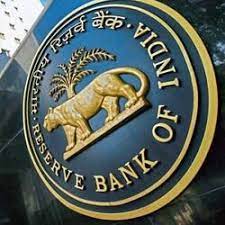Variable Rate Reverse Repo (VRRR)

- 07 Jul 2025
In News:
The Reserve Bank of India (RBI) recently carried out a 7-day Variable Rate Reverse Repo (VRRR) auction worth ?1 lakh crore. This measure was taken to manage the surplus liquidity in the banking system, which had surged to approximately ?3.75 lakh crore.
What is VRRR?
The Variable Rate Reverse Repo (VRRR) is a liquidity management tool employed by the RBI to absorb excess funds from commercial banks for a specified period. Unlike the fixed reverse repo rate, the VRRR rate is determined through an auction mechanism, allowing market forces to decide the interest rate.
Key Characteristics:
- Auction-Based Interest Rate: Interest is not fixed but discovered through competitive bidding.
- Time-Bound Operation: Typically conducted for durations like 7, 14, or 28 days.
- Liquidity Management Tool: Helps the RBI withdraw excess liquidity from the financial system.
- Repo Rate Ceiling: The interest rate in VRRR operations cannot exceed the current repo rate.
- Flexible Tenor: RBI may modify the duration of VRRR auctions based on prevailing liquidity conditions.
Objective of VRRR
- To mop up surplus liquidity from the banking system.
- To help regulate short-term interest rates and support effective transmission of monetary policy.
- To foster a market-driven interest rate environment in the short-term interbank market.
How VRRR Functions
- Auction Announcement: RBI declares the amount and duration of the VRRR operation.
- Bid Submission: Banks submit bids with the amount and the interest rate at which they are willing to park funds with RBI.
- Rate Determination: RBI accepts bids at or above the cut-off rate, determined by the auction.
- Interest Earnings: Banks earn interest at the accepted rate over the auction tenure.
Implications of VRRR Operations
- On the Money Market: Tightens liquidity, leading to an uptick in short-term rates such as the call money rate and TREPS.
- On the Bond Market: May cause short-term government and corporate bond yields to rise, increasing borrowing costs.
- On Banks:
- Offers an avenue to earn returns on idle funds, improving short-term profitability.
- Temporarily locks up funds, which may reduce immediate availability for lending or investment.
This mechanism is a vital part of the RBI's toolkit to maintain financial stability and ensure efficient transmission of monetary policy.
